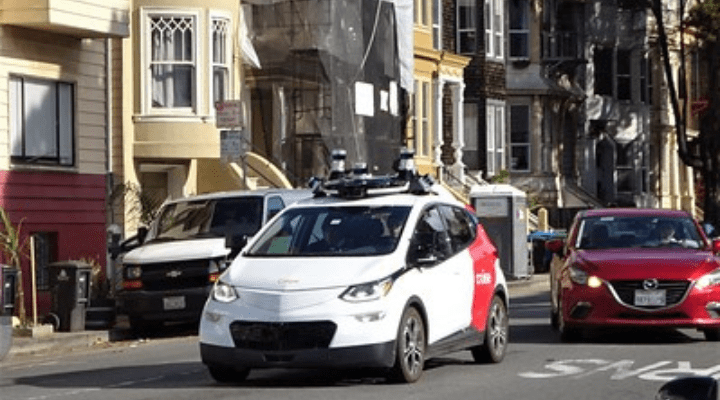Thinking ahead will give us transport technologies that work for society, not for their own sake – Inside track
4 min read
Predicting the transport technologies of the future is a risky business. Supersonic passenger aircraft, hovercraft and maglev trains have all failed to take off at scale.
But advances in computing and batteries are prompting the development of several new transport technologies around the world. Driverless taxis are operating in San Francisco, even if one of the two providers was banned after a pedestrian was injured. Flying cars and their traffic control systems have been tested in Korea and their production is beginning in Japan. Drones are already delivering coffee in Dublin and Texas.
Autonomous cars look increasingly close to reaching UK streets, given the scale of investment, number of players in the market and the progress made towards addressing safety concerns and cost barriers. Consultants at McKinsey think advanced levels of automation – where humans only need to drive as a fallback – will be more common in Europe and North America from 2025 and will represent between 17 and 57 per cent of car sales by 2035.
Reflecting this growing maturity, the 2023 King’s speech promised an Automated Vehicles Bill. This should set out rules around liability and safety to facilitate what the government hopes will be a multibillion pound market and help prevent the 88 per cent of road accidents partially attributable to human error.
How green are autonomous vehicles?
Yet the implications of autonomous vehicles for the environment aren’t clear. Experts point out that they could lie anywhere between two extremes. The first is a green transport utopia where walking, cycling and public transport are prioritised, supported by a fleet of autonomous vehicles replacing private car ownership, freeing up road and car parking space. This vision reflects that autonomous vehicles are expensive for individuals to buy, but that they can efficiently move between tasks without a driver, delivering people to public transport hubs.
There are reasons to hope something of this vision might be realised. Taxi companies are showing an interest and Transport for London’s 2019 position statement on connected and autonomous vehicles sees them integrated into healthy, less car dominated, streets.
When academics held public consultation workshops in Manchester and Melbourne, people were particularly keen on autonomous vehicles that both provided public transport and linked people with other forms of transport. And it was the Brits who were most optimistic about this future. (Ironically, our road layouts and tendency not to follow rules as pedestrians makes the UK a challenging test bed for autonomous systems.)
The alternative, negative, extreme would see autonomous vehicles, accessible only to the more wealthy, provide door to door services. They might even need their own dedicated road spaces, especially if they continue to struggle with identifying things like motorised wheelchairs and police tape. This is likely to erode public transport services and the space available for walking and cycling, increasing social inequity.
Any autonomous vehicle – or other emerging technology – is likely to be low emission at the point of use because new power sources will be used, like batteries or hydrogen. However, generating the electricity could still cause carbon emissions and constructing the vehicles almost certainly will, at least in the short term. These environmental impacts, and others, for instance air and water pollution from tyre and brake wear, and biodiversity loss associated with mining raw materials, are harder to remove.
Rural transport could see big benefits
In rural areas, where there’s limited public transport, new technologies could really come into their own, for instance with autonomous vehicles enabling people to reach public transport hubs.
Drone deliveries might sound like a recipe for unnecessary last minute purchases but respondents to a recent government consultation also pointed out that in rural areas they could have lower environmental impact than vans. Other solutions for remoter areas include autonomous buses, greater use of smart technology to aggregate and optimise deliveries and virtual solutions that avoid the need to travel.
Banning private ownership is unlikely
But new technologies don’t always take off in predictable ways. Few predicted the rise of Uber and regulation is still trying to catch up with the growth of e-scooters. One way of avoiding the negatives that has been suggested is to ban private ownership of autonomous vehicles. If they are only operated by large, easily regulated, companies this could improve safety. However, countries are keen to capitalise on this new market and possible productivity benefits from people working on the move. For these reasons and the gradual evolution of automation, a blanket ban on private ownership seems unlikely. Possibly, it will be easier to introduce rules around which types of vehicle can access particular types of road.
To avoid drifting into automated vehicle chaos, it would help to have a more active public conversation now about what good travel looks like. The government should initiate this at the national level, because national policy will be needed, but local and regional views must be taken into consideration.
There are also policies the government should be adopting regardless, which would additionally help futureproof the transport system ahead of the arrival of new technologies. As revenue from fuel duty falls, some form of road user charging looks increasingly likely and could reflect the wider environmental impacts of individual car use. Improving public transport provision and facilitating car sharing – already good moves in their own right – would also help to create the conditions for more equitable and sustainable deployment of autonomous vehicles, as would building their use into the planning of future public transport hubs.
With new transport technologies, policy makers need to be firmly in the driver’s seat. Most technologies aren’t inherently good or bad. It’s how they are deployed that matters.
Photo credit: harry_nl





